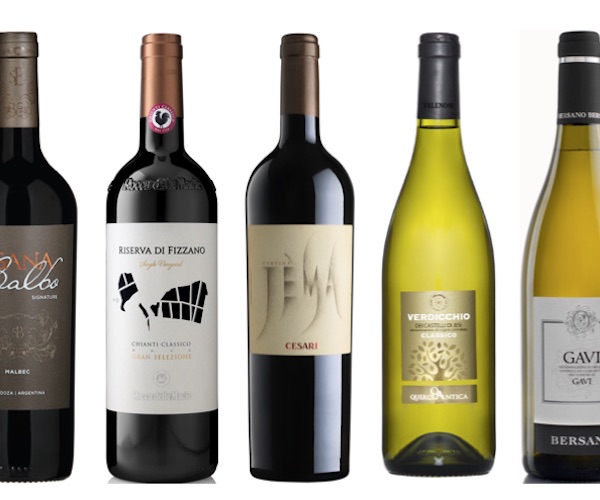It’s a happy circumstance that a few more New Zealand wines than usual are appearing at the LCBO this summer. Canada has proven a solid and growing market for the wines over the past several decades, and most of the newly available lot are priced approachably for the dabbling wine drinker who might be inclined to take a flyer on an unknown label. New Zealand is a solid bet, no question. Across the board, the wines are appealing at all levels and for all manner of imbibing. Price-to-quality ratios are high, and there is a direct correlation, generally, between price and sophistication.
I don’t generally like generalizing but I will do so in describing New Zealand wines as lively and refreshing, quite easy and pleasing on the palate, and friendly to all manner of wine drinker. (Orange wines notwithstanding… ha!) That is not to say New Zealand wines are not also — or can be — deeply complex and rewarding for the sophisticate. But what’s lovely about these wines — again, generally — is that the majority of the ones we see in the Canadian market are ready to drink now, even the pricier ones. And, if your palate is like mine, the juicy and jumpy quality of these wines suits just fine. Bright cool climate wines like these suit the current vogue for lighter, lower alcohol and ready-to-drink wines and, dare I say, the brightest of the bunch are superb summer sippers, reds included. That’s a compliment.
Below, I’ve wrapped up a few of the wines that you’ll find at the LCBO or agencies. These are recommended based on a tasting or reputation. But first, a little background.
The first vines were planted in New Zealand in 1819 and it was the usual suspects — the British and French — who kick started the industry in the middle of the century. Never mind that the indigenous Polynesian Maori arrived (from Tahiti, it is believed) in the early 14th century. Their culture, fortunately, is deeply embedded in New Zealand’s daily life to this day, and that applies to wine too. The country has about 700 labels, with almost 100 featuring Maori names. Though only a handful (about six) are currently owned or led by Maori, this appears to be changing for the better.
We started seeing New Zealand wines in Canada around the same time everyone else did, in the 1980s. This was just 10 years or so after a New Zealander named Ross Spence, who had studied in California, released the first commercially available wine in 1974 from his Matua Road vineyard. The islands produce, to this day, tiny quantities on the global scale, ranking 31 (between Ukraine and Mexico) on the International Organisation of Vine and Wine (OIV) table of grape-growing countries. As of 2020, there were 39,935 hectares planted, about 0.5% of the globe’s total.
This is Sauvignon Blanc country, as most people will know. We have New Zealand to thank for a style that is decidedly non-French (that is, non-Sancerre , Touraine or Bordeaux), but rather presents, generally, an in-your-face cut-grass-and-herbal-green blast that can be a bit off-putting to sensitive types (like me). Nonetheless, it is a defining style with many fans, and it certainly has earned a place at the table. But strengths also run to Pinot Noir and Syrah, as well as Pinot Gris and Riesling. Each of the two islands — North and South — has distinct qualities that play to the strengths of the grapes grown there, with the south considered to have a decidedly cool climate. Top regions to watch for, in no particular order, Auckland, include Hawke’s Bay, Gisborne, Marlborough, Martinborough and Central Otago. Climate runs from eternally wet to surprisingly dry for an island nation, with the central mountain ranges helping to shield the land from westerly wetness. As with most of the world, climate chaos is playing a hand, with remnants of tropical cyclones hitting at harvest twice in the past decade. But for the cooler zones of the south, global warming may prove to be beneficial.
Red and white lovers have plenty of choice. Production for reds is heavily weighted to Pinot Noir (76%), with Merlot (14%) and Syrah (6%) in the distance, though no less intriguing. They are followed by small percentages of Cabernet Sauvignon (3%), Malbec (1%) and sundry others. Whites are led by Sauvignon Blanc (73%), Chardonnay (9%) and Pinot Gris (8%), with Riesling (2%), Gewürztraminer (1%) and “other” (1%) pulling up the rear. New Zealand does well with grapes that were made famous elsewhere. (That’s a compliment.) And emerging winemakers, building on solid work done by the pioneers, are forging a path toward a distinct New Zealand philosophy and style.
What’s more, New Zealand’s wine industry is fighting the good fight for the environment. “It’s the right thing to do” is their refreshingly honest marketing stance. The industry is targeting 2050 as the deadline to achieve carbon neutrality and zero landfill-destined waste. As of this year, 96% of vineyard area is certified by Sustainable Winegrowing New Zealand and 90% of wines are produced by SWNZ-certified facilities.

Over the next few months, you’ll see new wines popping up at the LCBO and I encourage you to dabble. If you enjoy them (and you surely will), please go deeper and reach out to the importers noted below, for most of them carry many more labels, some in a premium category. (So you can show off to your friends.) Some of the wines below are available directly from the agencies (that is, not via the LCBO or provincial monopolies).
Here are some recommendations based what’s in market right now and coming soon.
2023 Invivo x SJP Sauvignon Blanc, Marlborough (Nicholas Pearce Wines) LCBO Vintages $23.95
This is pretty much Sarah Jessica Parker’s Sex in the City personality captured in a bottle. Quirky, angular, akimbo, just barely holding it together — a little bit sweet and a little bit tarty. Looks good in Dolce & Gabbana. OK, that’s more of a Carrie Bradshaw description, but I stand by it. The tropicals are there, and the acidity does its job admirably, cutting the slight sweetness. A little skin contact and oak treatment lend dimension. Critics seems to enjoy this wine, and this is the fifth such collaboration. This was released at LCBO March 16.
![]()
2023 Graham Norton Sauvignon Blanc, Marlborough, Hawkes Bay, Gisborne (Nicholas Pearce Wines) LCBO Vintages $21.95
Perhaps because I like Graham Norton, I want to like this wine too. (Yes, wine reviewers can be swayed by celebrity.) This wine — the tenth such bottling by Norton — is 88% Sauvignon Blanc, 8% Pinot Gris and 4% Chardonnay. His wines have received admirable critical recognition. Expect tropical tones, pear and apple carried on lively acidity and, like Norton, a squirrel-like energy. At LCBO Oct. 4.
TBD apples
2022 Dog Point Sauvignon Blanc, Marlborough (Noble Estates) Vintages Essentials $29.95
An enticing nose of orange and granny smith, florals and bright lemon/lime. Bright acidity and salinity garnish juicy fruit flavours. Stainless steel with some natural fermentation and no filtration. Elegant wine that could handle a few years of ageing well.
![]()
2022 Spy Valley Pinot Noir, Marlborough (Noble Estates) LCBO Vintages $32.95 (2020 currently available on LTO for $24.95)
This has all the charms of ripe, cool climate Pinot Noir, with the requisite bright red berry aromas and flavours and alluring sweet cinnamon spice. It’s ripe, full style — at 14% alcohol but full-on refreshing. Long fresh finish. Quite irresistible.
![]()
2022 Loveblock Sauvignon Blanc, Marlborough (The Vine Agency) Consignment $27.99
I tasted the 2021 last year at a sommelier event focused on New Zealand wines in upstate New York, where the wine was presented by Erica Crawford (a familiar name due to her husband Kim). This is a boutique-style crafted blend, the grapes harvested on cool mornings and fermented separately in small batches based on soil variation. Crawford espouses the ageability of Sauvignon Blanc and this is certainly of that ilk. Concentrated, with complex tropical and tree fruit and a seam of acidity bolstering a solid structure. This is a serious mineral-driven Sauvignon Blanc. The Crawfords are defining their own style for the grape and it will be exciting to watch where they go.
![]()
2022 Villa Maria “Reserve” Wairau Sauvignon Blanc (Philippe Dandurand Wines) LCBO Vintages $24.95
When in doubt, grab Villa Maria — it’s a proven fact. Sure it’s a large volume winery, but the quality is top. This sauvignon blanc eschews the full-on grassy pong that has come to define NZ sauvignons, so it comes off as slightly more polished. Very nice, bright yet elegantly restrained. Plainly delicious.
![]()
2021 Luna Estate Pinot Noir, Martinborough (Noble Estates) LCBO Vintages $26.95
This wine has lots of red berries, some toasty spice and excellent concentration. A little bit of dark cherry and some nice soft tannins. The wine is lush, textured and quite alluring — and at 12.5% it’s nimble and light. The best of all worlds, in a way, and a great excuse to dispatch a duck. Great for light fare on the table, and also a nice sipper. Fabulous value. This was released at LCBO April 24.
![]()
2019 Burn Cottage “Sauvage” Vineyard Pinot Noir, Central Otago (The Living Vine) LCBO Classics $82
I can recommend this wine because I trust the people behind it, and it has also garnered some solid critical acclaim (you can look that up). Just 5.8 hectares were planted in 1999 with five clones on the legendary Felton Road. This is small-batch, climate-conscious winery is making outstanding wines. Absolutely worth checking out for its layered fresh and tertiary fruit, spicy core, and medium ripening tannins. Can be aged a few years.
TBD apples
(All wines are rated out of a possible five apples)







